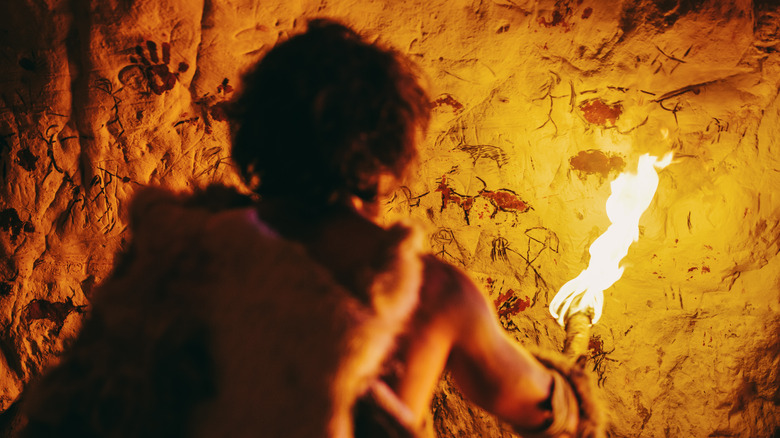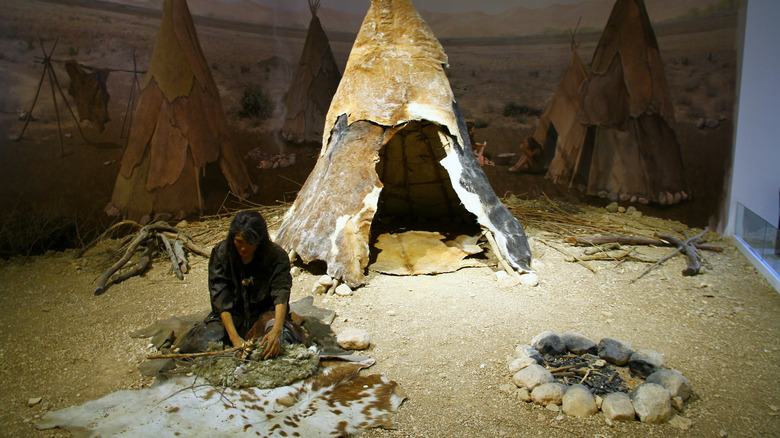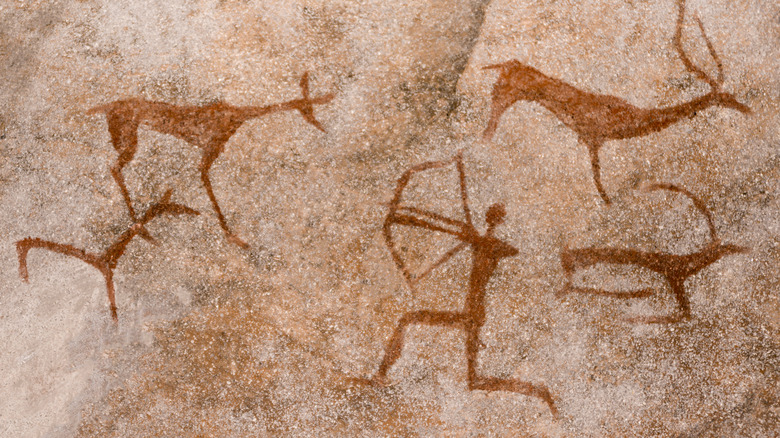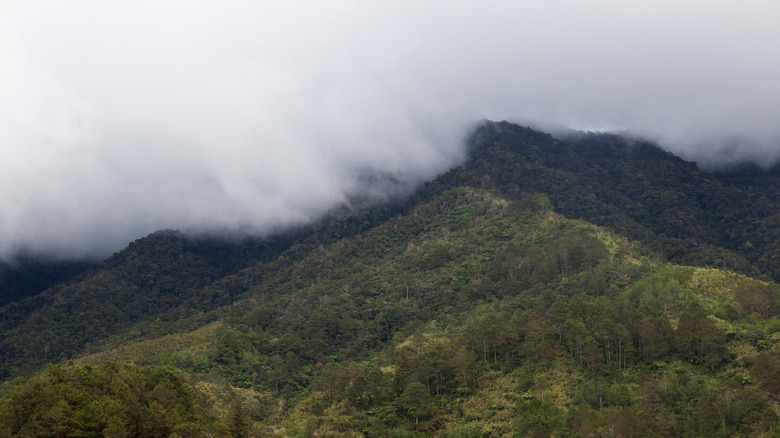The Uncontacted Philippines Tribe That Might Have Been A Hoax
Since the dawn of anthropology, people have looked upon indigenous peoples with curiosity and wonder. The desire to study hunter-gatherers came partly from the belief that they were, in a sense, living fossils of human prehistory. Some of this led to literature that placed foragers at the lowest rung of cultural evolution. This mentality also led to some dubious scientific practices, including toward a Native American man named Ishi — the last member of the massacred Yahi culture — who was nearly exhibited at a museum at the turn of the century, presented to the public as a wild man and sole survivor of a primitive people (per The Vintage News).
Flash forward to 1971, and the fascination with indigenous people had not waned. In the tropical rainforest of the Philippines, a discovery sent the media into a tailspin — a tribe of stone age people; relics of a time long passed. They were the Tasaday people — a group who stepped from the bowels of the cave in which they dwelt and breathed life into the artists' depictions of cavemen from eons ago. National Geographic reported that they ate wild plants and had no contact even with farming communities (via Scholars). The waves of media intrigue at the new discovery were palpable, but soon, the realization that something was amiss was even more salient.
What is the Hunter-Gatherer Lifestyle?
The hunter-gatherer economy was practiced by humans until around 11,000 years ago, when the seeds of agriculture began to sprout (per National Geographic). These nomadic groups developed stone tools that were crafted for specific tasks, including projectiles, knives, and scrapers for making clothing. So successful was this lifestyle that it persisted for millions of years of human evolution and allowed the Homo sapiens of 200,000 years ago to begin expanding from East Africa to Asia, Europe, and eventually the Americas (via History). Innovations such as controlled fire, fishhooks, and ivory needles made our species highly adaptable to many environments, including the ice age conditions in Europe.
Intricate artworks were also honed to stunning effect on cave walls and in the form of pottery, jewelry, and sculpted figurines (via the MET). Contrary to popular belief, the caves that were adorned with these artworks were not always living spaces for prehistoric peoples. While many dwelt at cave entrances for shelter, they stayed temporarily within rock formations and even semi-permanent huts in areas with prolific and consistent resources (via History).
A Brief History of Anthropology
American anthropology combines four subfields: biological, cultural, archaeological, and sociolinguistic anthropology. The combination of these seemingly disparate studies was largely due to Franz Boas, an early 20th-century researcher who believed the study of humans required a holistic approach. Prior to then, racist beliefs derived from European colonial expansion influenced the development of anthropology. The 19th-century results were a loose application of Darwinian thinking that categorized cultures and races into hierarchies. Some believed that contemporary foragers represented earlier stages of European evolution and, as such, were still living a primitive existence (via National Geographic).
By Boas' time, cultural relativism became a prominent school of thought and had steered anthropology away from the evolutionary ideas of theorists like Henry Lewis Morgan (via National Geographic). Cultural relativism posited that each culture was unique and needed to be studied on its own terms. To judge other cultures by the standards of our own became known as ethnocentrism, a term coined by sociologist William Graham Sumner in 1906 (via ScienceDirect). Even with this turning point, the fascination with "primitive" man, especially in the public imagination, remained alive.
The Discovery of the Tasaday
In 1971, a rich politician from the Philippines, Manuel Elizalde Jr., discovered the Tasaday foragers in a rainforest in Mindanao — supposedly with the help of a local hunter named Dafal (via Esquire). In 1972, he set up a camp with over 40 team members discreetly observing the cave opening the Tasaday inhabited (via Scholars). Soon, Elizalde was ferrying journalists and even celebrities in his helicopter to see the indigenous group. Curiously, the politician didn't want independent anthropologists and other scientists visiting the area. Rather, he preferred to exercise control over which experts arrived on the scene. According to author and professor of anthropology Thomas N. Headland, Elizalde Jr. selected a group of nine scientists to pay a brief, three-day visit before publishing reports on the Tasaday (per Scholars).
From the get-go, experts were skeptical about the seemingly sensational headlines, the prime example of these including (via Esquire) "Lost Tribe of Tree-Swinging People Discovered in the Philippines." Journalists claimed they were previously uncontacted, had dwelt in caves, and spoke a language unlike any ever heard. The stereotype of the noble savage arose when reports claimed they had no words for "war," "hostility," or "weapon." The New York Times and even National Geographic exploited the sensational story, according to Esquire.
The Possible Hoax
A scientist came forward with skepticism about the claims made about the Tasaday people. Carol Maloney told the media that it seemed unlikely that the Tasaday remained isolated for 1,000 years (via Esquire). This was an understandable point considering a farming community lived a mere 2.5 miles away from the Tasaday's home (via Scholars). In 1986, there was mention by The New York Times of a possible hoax, especially when anthropologists were free to explore the area and discovered the supposedly isolated tribe decked out in T-shirts and companioned by domestic dogs. Their technology also included knives, mirrors, and other clothing not indicative of the caveman stereotype once attributed to them.
The report questioned, however, whether the discovery proved that Manuel Elizalde Jr. perpetuated a hoax, or if contact with outsiders for over a decade had altered their way of life. Indeed, researchers discovered that the Tasaday were intermarrying with another tribe called the Blit (via The New York Times). However, Swiss journalist Oswald Iten interviewed some members of the Tasaday and was told that Elizalde constructed an elaborate hoax. The Tasaday man told Iten that they did not live in caves until Elizalde came along. In Iten's report, the man claimed they were given money to pose as cavemen (via Esquire). According to The New York Times, Elizalde's side of the story fell dead after he disappeared from the Philippines mysteriously in 1983, never to return.
What is the Truth?
Anthropologists largely agree that it is unlikely the Tasaday were ever living like cavemen the way the media in the 1970s claimed (via Scholars). They do agree, however, that the Tasaday were a distinct group of forest-dwellers with similarities to other foragers in Southeast Asia. They had contact with other tribes but maintained an identity of their own, all while trading with the farmers 2.5 miles from their location near Tasaday Cave. Interestingly, they were once farmers, according to Dr. Thomas Headland, but that changed when they separated from the Manobo farmers and settled deep into the forest. Evidence for this came from the fact that they spoke the Manobo language, and their environment in the rainforest couldn't sustain a hunter-gatherer lifestyle on its own, thus proving trade.
The case of the Tasaday hoax is a reminder of the persistent fascination developed societies have had with so-called "primitive" people long after colonialism transformed much of the world. The romanticism surrounding the Tasaday tapped into old stereotypes of linear cultural evolution and the peaceful past enjoyed by simpler people. What the outcome of the story teaches us is that there is always nuance in what defines one culture versus another and defines the definitions of "primitive" or "progressive."





